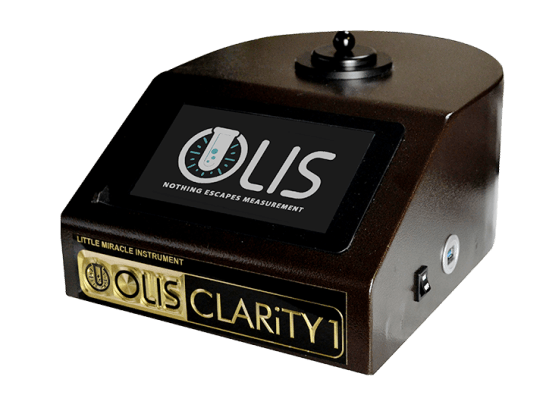The Best Guide To Uv/vis
The Best Guide To Uv/vis
Blog Article
Some Ideas on Uv/vis You Need To Know
Table of ContentsCircularly Polarized Luminescence Can Be Fun For AnyoneRumored Buzz on Uv/visThe 5-Minute Rule for Uv/visThe Buzz on Circularly Polarized LuminescenceUv/vis for Beginners

Spectrophotometry is a tool that hinges on the quantitative analysis of molecules depending on how much light is taken in by colored substances.
Not known Details About Circular Dichroism
A spectrophotometer is typically utilized for the measurement of transmittance or reflectance of options, transparent or nontransparent solids, such as sleek glass, or gases. Although many biochemicals are colored, as in, they absorb visible light and therefore can be measured by colorimetric procedures, even colorless biochemicals can frequently be converted to colored compounds appropriate for chromogenic color-forming responses to yield substances suitable for colorimetric analysis.: 65 Nevertheless, they can also be created to determine the diffusivity on any of the listed light ranges that usually cover around 2002500 nm utilizing various controls and calibrations.
An example of an experiment in which spectrophotometry is utilized is the determination of the equilibrium constant of a service. A particular chain reaction within an option might happen in a forward and reverse instructions, where reactants form products and items break down into reactants. At some point, this chain reaction will reach a point of balance called an equilibrium point.
Not known Incorrect Statements About Uv/vis
The quantity of light that passes through the option is indicative of the concentration of particular chemicals that do not allow light to travel through. The absorption of light is due to the interaction of light with the electronic and vibrational modes of molecules. Each kind of molecule has an individual set of energy levels associated with the makeup of its chemical bonds and nuclei and hence will take in light of specific wavelengths, or energies, resulting in unique spectral properties.
They are commonly used in many markets consisting of semiconductors, laser and optical production, printing and forensic examination, as well as in labs for the research study of chemical compounds. Spectrophotometry is often utilized in measurements of enzyme activities, determinations of protein concentrations, decisions of enzymatic kinetic constants, and measurements of ligand binding reactions.: 65 Eventually, a spectrophotometer is able to identify, depending on the control or calibration, what substances are present in a target and precisely how much through computations of observed wavelengths.
This would come as a service to the previously produced spectrophotometers which were unable to take in the ultraviolet correctly.
The Best Guide To Circularly Polarized Luminescence
It would be discovered that this did not provide satisfactory results, therefore in Model B, there was a shift from a glass to a quartz prism which permitted better absorbance results - UV/Vis/NIR check my reference (http://connect.releasewire.com/company/olis-clarity-343997.htm). From there, Model C was born with a modification to the wavelength resolution which ended up having 3 systems of it produced
It irradiates the sample with polychromatic light which the sample soaks up depending upon its properties. It is transferred back by grating the photodiode range which identifies the wavelength region of the spectrum. Ever since, the creation and implementation of spectrophotometry gadgets has actually increased profoundly and has turned into one of the most ingenious instruments of our time.

Unknown Facts About Circular Dichroism
Historically, spectrophotometers use a monochromator containing a diffraction grating to produce the analytical spectrum. The grating can either be movable or fixed. If a single detector, such as a photomultiplier tube or photodiode is used, the grating can be scanned step-by-step (scanning spectrophotometer) so that the detector can determine the light strength at each wavelength (which will correspond to each "action").
In such systems, the grating is fixed and the strength of each wavelength of light is determined by a different detector in the selection. When making transmission measurements, the spectrophotometer quantitatively compares the portion of light that passes through a referral solution and a test option, then electronically compares the intensities of the 2 signals and computes the portion of transmission of the sample compared to the referral standard.

Report this page